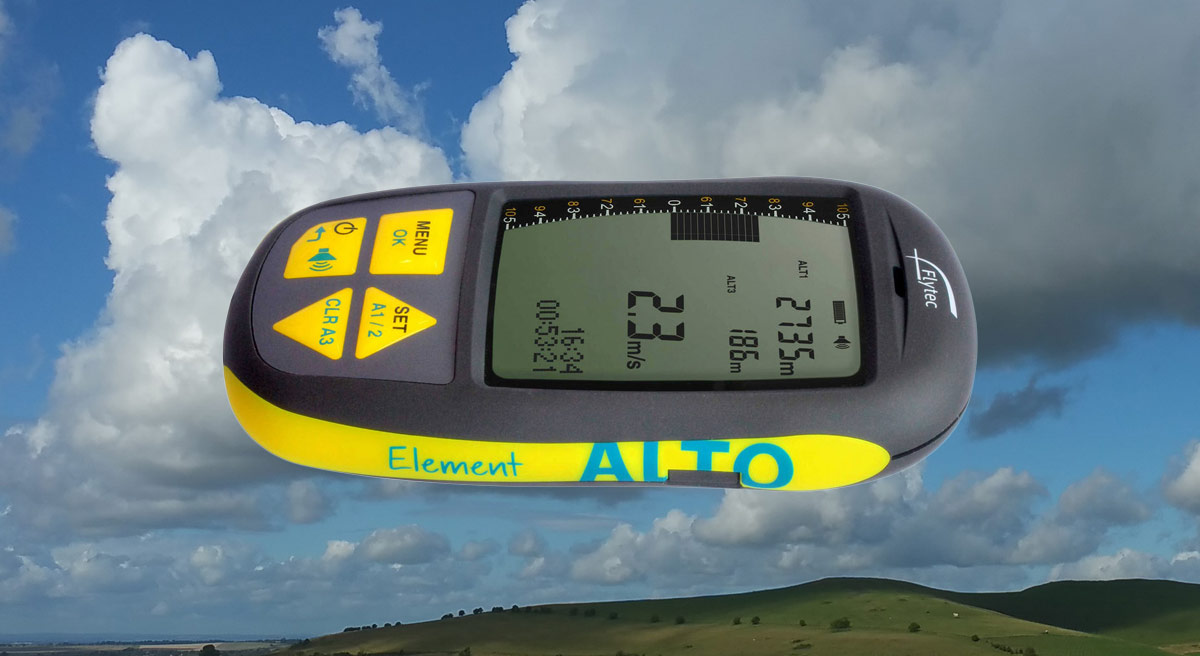
The Flytec Alto has been created for leisure paraglider, paramotor and hang glider pilots who want a simple, robust and reliable vario with essential functionality only. On the outside it is based on the proven Flytec design with an extremely tough housing, high-contrast monochrome LCD screen and tactile, glove-friendly buttons. On the inside it features simplified internal electronics by Naviter combined with signature Flytec-quality vario and tone.
The Alto came professionally packaged, as seen below.
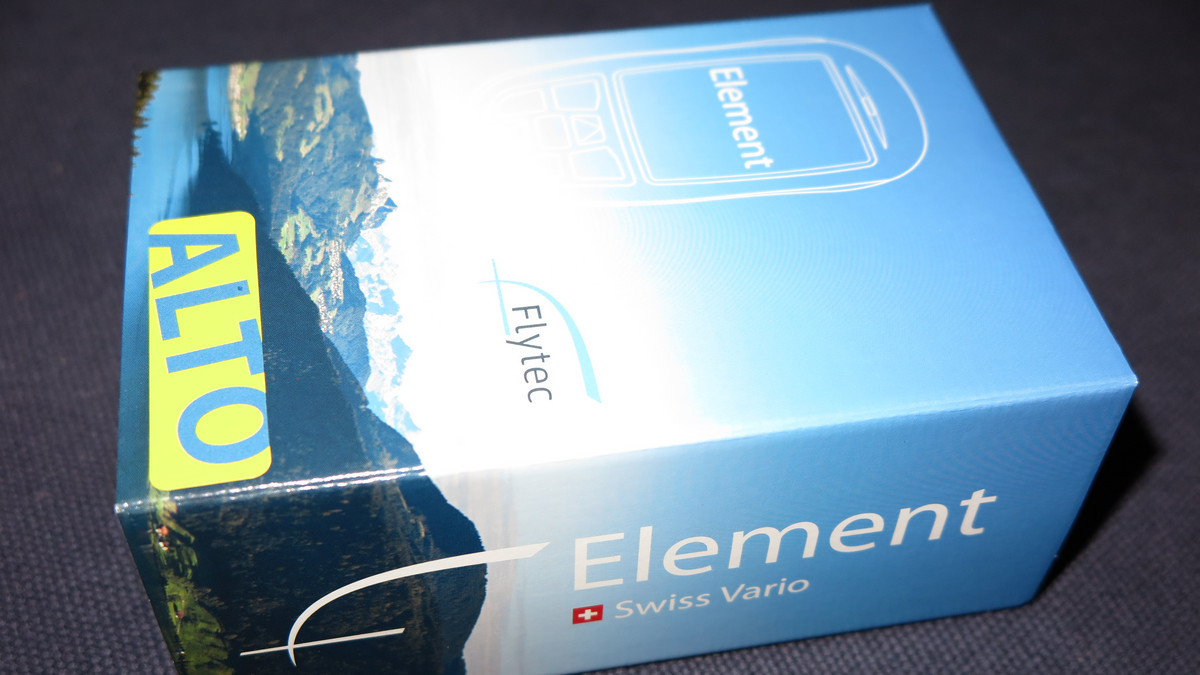
Opening up the box, it continues to impress: a high-quality protective case for transport or storage; a mini karabiner (for optional use with the case or built-in security lanyard); a printed quick-start manual; and two AA type alkaline batteries, which should last around 250 hours.
Build quality & design
First impressions are the Alto's overall excellent build quality and design. Not only does it look good, but it feels good in the hand. It's also relatively compact (138 x 72 x 24 mm) and lightweight (122 g).
The casing of the Alto is the same highly robust shockproof ABS housing as it's 'elder brother' in the Flytec range, the Speed. It's easy to tell these instruments apart due to their differently-coloured keys and sides—Alto yellow, Speed blue—and of their model names being clearly printed on each side of the unit.
I really like the four raised buttons, made from a special non-slip material, which make them noticeably easier to both locate and press. This is especially useful when, say, trying to pump up the volume with your thick gloves as air rushes past you in a sporty spring thermal. When pressed, the tactile buttons give a little, and make a clear positive click, so it's easy to know that you've pushed the button properly. This might sound like a small detail, but in real-life use it is important.
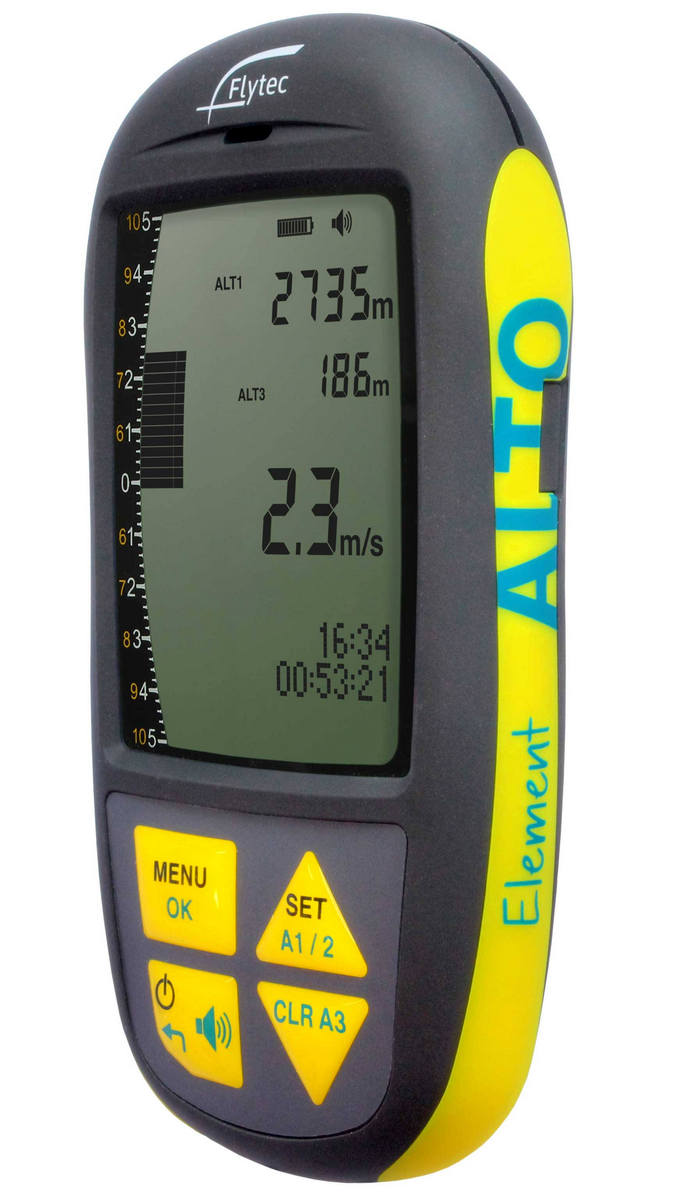
Turning the instrument on (power button long press, OK) the screen display is very clear and easy to read, even in the brightest sunlight. The layout is simple and intuitive.
Quick-start guide
It's worth taking a look at the quick-start guide, which is elegant and simple: a single, double-sided sheet with all you need to know to get you going. This is already a good indicator that a lot of thought has gone into making the Alto as easy and user-friendly as possible. One side of the sheet has a few short paragraphs with icons explaining the basics: switching on and off; vario profiles; batteries; online manual; and maintenance. The other side has a large, clear labelled diagram giving an overview of the Alto.
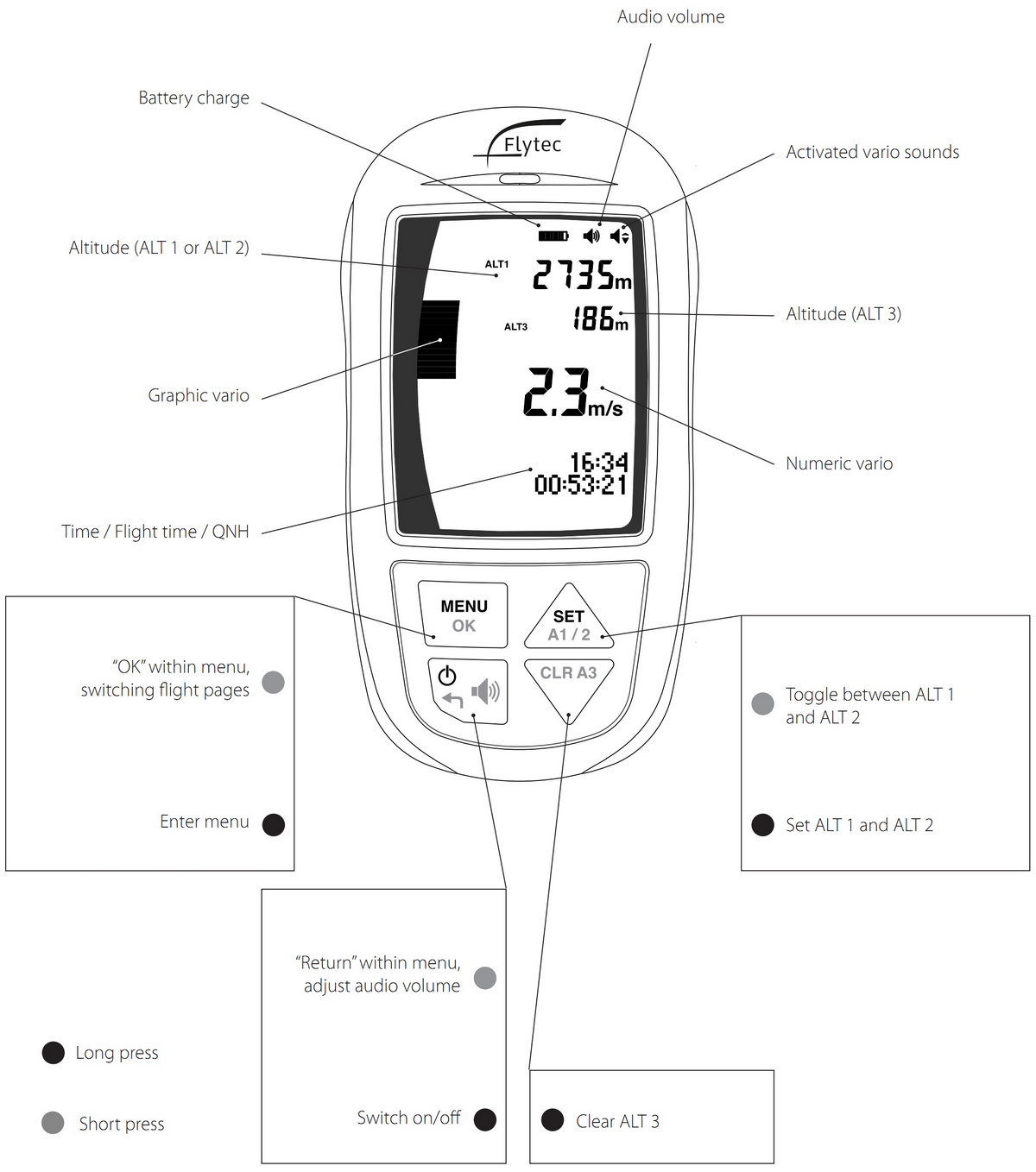
It's worth spending a couple of minutes getting to know what's what, especially if you're a new to varios.
Alto Manual
Whilst not as short and sweet as the quick-start guide, the Alto user manual is well laid out, clearly written, nicely illustrated, detailed and comprehensive. Those who don't suffer from manualophobia 😉 will appreciate the effort that has gone into making it. (At the time of writing there are some errors in the manual, with text and diagrams referring to another Flytec instrument, the Track. Hopefully Naviter (who now own the Flytec brand) will resolve these soon.)
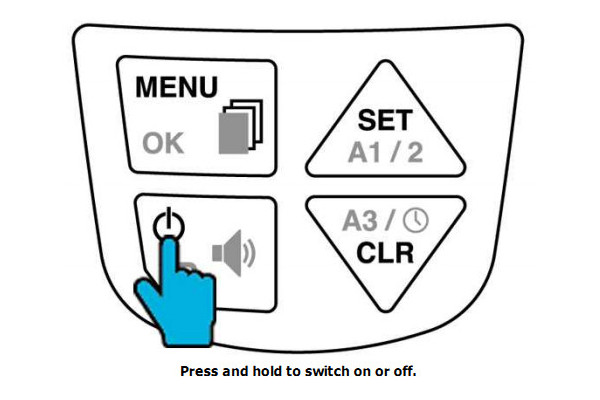
Experienced pilots will most probably be able to work out what everything is, and how to set most things, without even having to refer to the quick-start guide. Pilots familiar with Flytec and Brauniger instruments will especially feel immediately at home with the Alto, but even users more familiar with other brand's instruments should find it easy to adapt.
Vario & features
The Alto's vario is highly sensitive and accurate. On the display side, it has a graphical instant and average climb indicator, as well as displaying the average vario numerically. On the audio side, it has a clear and pleasant vario tone that varies according to the climb rate: the higher the climb rate, the higher the pitch (without going too crazy). There is also an optional near-thermal tone. The vario tone frequency, sensitivity, audio mode and climb-tone are all customisable.
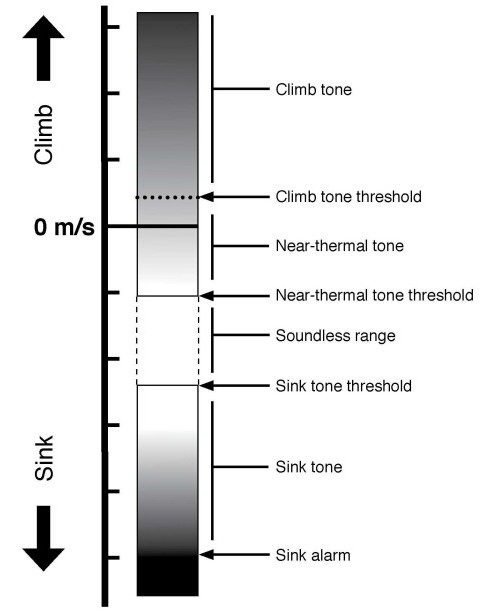
^ The various tones for the Alto vario.
For different flying types, the Alto offers five different vario profiles: weak thermals; normal; strong thermals; soaring; and ballooning (for hot air balloon pilots). If you prefer to keep things simple, just leave it on the default setting (Normal) which will work well for most situations. If you'd like to further optimise the vario for the type of flying you're doing, these profiles are a nice feature, which can help you make the most of the given conditions.
Altimeters & other features
The Alto has three altimeters. ALT1 shows your altitude Above Mean Sea Level (AMSL). ALT2 can be configured to show one of three things: either Relative altitude; or Flight Level (FL); or the altitude in meters or feet, opposite to what you have set for ALT1 (so you can see both at the same time). ALT3 is a custom 'relative altimeter' which can be reset with a press of a button; this is useful for zeroing the landing field, the launch site or any altitude you want to reference.
The units for altitude, vario, time, pressure and temperature are all individually user-selectable. It's possible, for example, to configure the Alto to display the altitude in feet, and the vario in meters per second, if you wanted.
Other useful features of the Alto include: The flight time and local time are permanently on display, so you know how long you've been flying and when to land in time for dinner (or at least how late you will be). It has a simple flight logbook, showing takeoff and landing times. The interface is multilingual, with 7 language options: English; German; Spanish; French; Hungarian; Italian; and Turkish.
Since the Alto is meant to be "a turn-it-on-and-fly device" Naviter decided not to add the complication of screen customisation which some other devices offer (but most pilots never use).
Mounting options

There are various mounting options and accessories available for the Alto. For paragliding and paramotoring, there are leg, harness and flight deck mounts. For hang gliding, there are specially designed brackets.
Summary
The Flytec Alto is a simple, robust and reliable flight instrument that's ideal for freeflight pilots who mainly just want to know their altitude and rate of climb or descent. It's very well made and easy to use. The Alto's highly sensitive and accurate pressure sensor mean it's vario and altimeters are exceptionally accurate. The high-contrast screen and glove-friendly buttons also make it easy to read and operate. Overall we highly recommend the Flytec Alto for pilots who want to keep things simple and don't require any GPS functionality.
Pilots who want basic GPS features (e.g. ground speed) in a similarly simple package should consider an entry-level alti-vario-GPS combo. For even more GPS functionality (e.g. flight tracklogs, thermal assistant, navigation, airspaces, topography, competitions) or a larger screen (perhaps full-colour or E-ink greyscale or/and touchscreen), you'll need to look at the higher-end flight instruments.
If in doubt, our general advice is to keep things more simple. You can always upgrade later (we offer generous part-exchange deals for freeflight instruments, wings, harnesses and reserves).
Find out more about the Flytec Alto
Brought to you by Flybubble
Like what we do? The best way to thank and support us is to buy gear from us and recommend us to others. Review our service on Trustpilot and our products on Flybubble Shop. You can also subscribe to Flybubble Patreon. Thank you!

